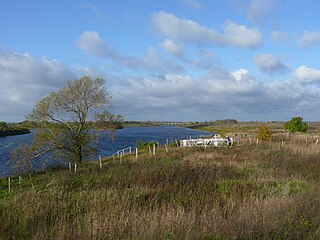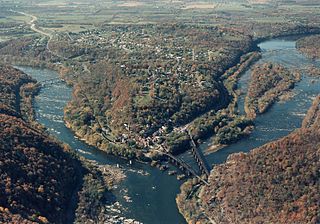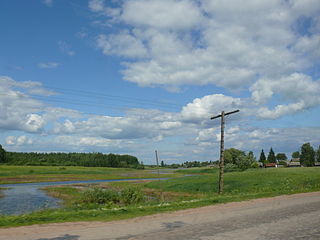
Staraya Russa is a town in Novgorod Oblast, Russia, located on the Polist River, 99 kilometers (62 mi) south of Veliky Novgorod, the administrative center of the oblast. Its population has steadily decreased over the past years, going from 41,538 recorded in the 1989 Census to 35,511 in the 2002 Census to 31,809 in the 2010 Census.

Soltsy is a town and the administrative center of Soletsky District in Novgorod Oblast, Russia, located on the left bank of the Shelon River, 78 kilometers (48 mi) southwest of Veliky Novgorod, the administrative center of the oblast. Population: 10,086 (2010 Census); 11,264 (2002 Census); 11,782 (1989 Census).

Batetsky District is an administrative and municipal district (raion), one of the twenty-one in Novgorod Oblast, Russia. It is located in the northwest of the oblast and borders with Luzhsky District of Leningrad Oblast in the northwest, Novgorodsky District in the east, and with Shimsky District in the south. The area of the district is 1,600 square kilometers (620 sq mi). Its administrative center is the rural locality of Batetsky. District's population: 6,335 (2010 Census); 6,996 ; 7,622 (1989 Census). The population of the administrative center accounts for 35.6% of the district's total population.

Demyansky District is an administrative and municipal district (raion), one of the twenty-one in Novgorod Oblast, Russia. It is located in the south of the oblast and borders with Krestetsky District in the north, Valdaysky District in the northeast, Firovsky District of Tver Oblast in the southeast, Ostashkovsky District of Tver Oblast in the south, Maryovsky District in the southwest, Starorussky District in the west, and with Parfinsky District in the northwest. The area of the district is 3,200 square kilometers (1,200 sq mi). Its administrative center is the urban locality of Demyansk. Population: 13,001 (2010 Census); 16,020 ; 18,488 (1989 Census). The population of Demyansk accounts for 41.3% of the district's total population.

Maryovsky District is an administrative and municipal district (raion), one of the twenty-one in Novgorod Oblast, Russia. It is located in the south of the oblast and borders with Demyansky District in the north, Ostashkovsky and Penovsky Districts of Tver Oblast in the southeast, Andreapolsky District of Tver Oblast and Kholmsky District in the southwest, Poddorsky District in the west, and with Starorussky District in the northwest. The area of the district is 1,800 square kilometers (690 sq mi). Its administrative center is the rural locality of Maryovo. District's population: 4,673 (2010 Census); 5,711 ; 6,835 (1989 Census). The population of Maryovo accounts for 49.2% of the district's total population.

Moshenskoy District is an administrative and municipal district (raion), one of the twenty-one in Novgorod Oblast, Russia. It is located in the east of the oblast and borders with Khvoyninsky District in the north, Pestovsky District in the east, Lesnoy District of Tver Oblast in the southeast, Udomelsky District of Tver Oblast in the south, and with Borovichsky District in the west. The area of the district is 2,568 square kilometers (992 sq mi). Its administrative center is the rural locality of Moshenskoye. Population: 7,309 (2010 Census); 9,486 ; 10,679 (1989 Census). The population of Moshenskoye accounts for 34.3% of the district's total population.

Novgorodsky District is an administrative and municipal district (raion), one of the twenty-one in Novgorod Oblast, Russia. It is located in the southwest of the oblast and borders with Tosnensky District of Leningrad Oblast in the north, Chudovsky District in the northeast, Malovishersky District in the east, Krestetsky District in the southeast, Shimsky District in the southwest, Batetsky District in the west, and with Luzhsky District of Leningrad Oblast in the northwest. In the south, the district is limited by Lake Ilmen. The area of the district is 4,600 square kilometers (1,800 sq mi). Its administrative center is the city of Veliky Novgorod. Population: 57,673 (2010 Census); 58,622 ; 55,491 (1989 Census). In terms of both area and population, this is the largest district in Novgorod Oblast.

Parfinsky District is an administrative and municipal district (raion), one of the twenty-one in Novgorod Oblast, Russia. It is located in the center of the oblast and borders with Krestetsky District in the north, Demyansky District in the southeast, and with Starorussky District in the southwest. The area of the district is 1,591 square kilometers (614 sq mi). Its administrative center is the urban locality of Parfino. Population: 14,395 (2010 Census); 16,485 ; 17,650 (1989 Census). The population of Parfino accounts for 52.0% of the total district's population.

Poddorsky District is an administrative and municipal district (raion), one of the twenty-one in Novgorod Oblast, Russia. It is located in the southwest of the oblast and borders with Volotovsky District in the north, Starorussky District in the northeast, Maryovsky District in the east, Kholmsky District in the south, Bezhanitsky District of Pskov Oblast in the southwest, and with Dedovichsky District of Pskov Oblast in the northwest. The area of the district is 2,952 square kilometers (1,140 sq mi). Its administrative center is the rural locality of Poddorye. District's population: 4,645 (2010 Census); 5,610 ; 6,820 (1989 Census). The population of Poddorye accounts for 40.0% of the district's total population.
Dnovsky District is an administrative and municipal district (raion), one of the twenty-four in Pskov Oblast, Russia. It is located in the east of the oblast and borders with Soletsky District of Novgorod Oblast in the northeast, Volotovsky District, also of Novgorod Oblast, in the east, Dedovichsky District in the south, and with Porkhovsky District in the west. The area of the district is 1,194 square kilometers (461 sq mi). Its administrative center is the town of Dno. Population: 13,341 (2010 Census); 16,048 ; 20,110 (1989 Census). The population of Dno accounts for 67.9% of the district's total population.
Porkhovsky District is an administrative and municipal district (raion), one of the twenty-four in Pskov Oblast, Russia. It is located in the central and northeastern parts of the oblast and borders with Strugo-Krasnensky District in the north, Soletsky District of Novgorod Oblast in the northeast, Dnovsky District in the east, Dedovichsky District in the southeast, Novorzhevsky District in the south, Ostrovsky District in the southwest, and with Pskovsky District in the west. The area of the district is 3,190 square kilometers (1,230 sq mi). Its administrative center is the town of Porkhov. Population: 21,568 (2010 Census); 28,470 ; 35,015 (1989 Census). The population of Porkhov accounts for 49.2% of the district's total population.

Strugo-Krasnensky District is an administrative and municipal district (raion), one of the twenty-four in Pskov Oblast, Russia. It is located in the northeast of the oblast and borders with Plyussky District in the north, Shimsky and Soletsky Districts of Novgorod Oblast in the east, Porkhovsky District in the south, Pskovsky District in the west, and with Gdovsky District in the northwest. The area of the district is 3,090.1 square kilometers (1,193.1 sq mi). Its administrative center is the urban locality of Strugi Krasnye. Population: 13,466 (2010 Census); 16,579 ; 16,293 (1989 Census). The population of Strugi Krasnye accounts for 62.7% of the district's total population.


























